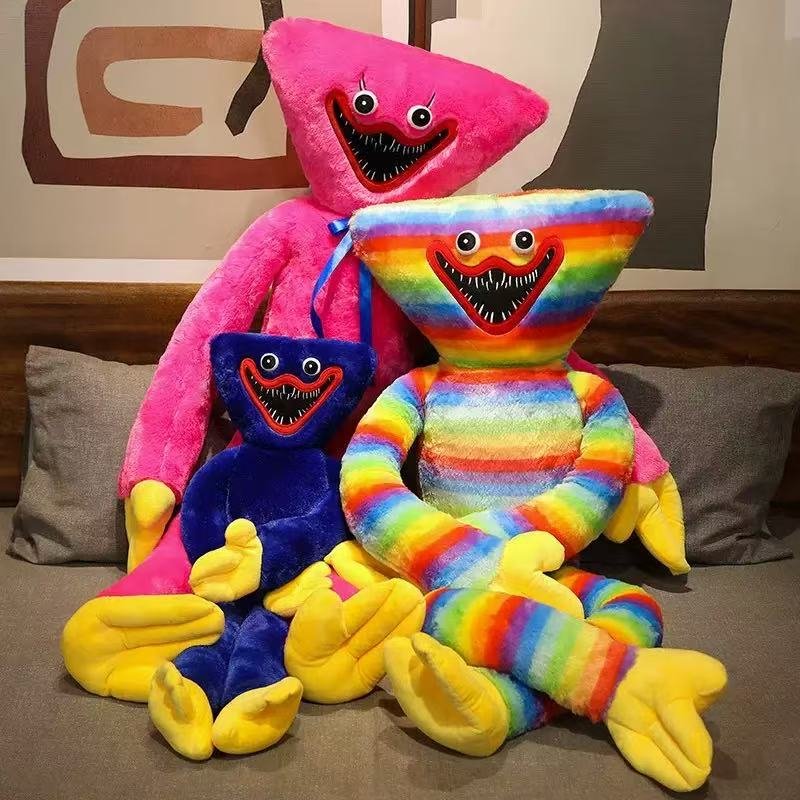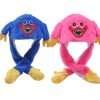Plushies are soft, cuddly, and adorable toys that come in various shapes, sizes, and colors. They are often made from cloth and filled with a soft material, such as cotton, polyester, or foam. Plushies can be in the form of animals, characters, food items, or anything else that the imagination can create. Plushies are popular among people of all ages and backgrounds, but why do people collect them? What are the benefits and motivations of having a plushie collection?
There are many possible reasons why people collect plushies, and each person may have their own unique story and preference. However, some of the common factors that may influence people to collect plushies are:
- Emotional comfort and support. Plushies can provide a sense of warmth, security, and companionship to people who feel lonely, stressed, or sad. Plushies can also help people cope with difficult emotions, such as anxiety, depression, or grief. Plushies can act as a source of comfort and support that people can hug, cuddle, or talk to whenever they need. Some people may even assign personalities or names to their plushies and treat them as friends or family members.
- Nostalgia and childhood memories. Plushies can remind people of their childhood and the happy moments they had with their toys. Plushies can also represent the characters or stories that people loved when they were young, such as cartoons, movies, books, or games. Plushies can help people reconnect with their inner child and relive the joy and wonder of their youth. Some people may also collect plushies as a way of preserving their childhood memories and passing them on to the next generation.
- Aesthetic appeal and creativity. Plushies can be very attractive and appealing to the eye, with their bright colors, cute designs, and soft textures. Plushies can also showcase the creativity and craftsmanship of their makers, who may use different materials, techniques, or styles to create unique and beautiful plushies. Plushies can enhance the beauty and personality of any space, such as a bedroom, a living room, or an office. Plushies can also inspire people to express their own creativity and make their own plushies or customize them according to their preferences.
- Hobby and passion. Plushies can be a fun and rewarding hobby for people who enjoy collecting things. Plushies can offer a variety of options and challenges for collectors, who may seek rare, limited-edition, or custom-made plushies. Plushies can also allow collectors to explore different themes, genres, or cultures through their plushie collections. Plushies can also help collectors connect with other like-minded people who share their passion for plushies. Collectors may join online communities, attend conventions, or exchange plushies with other collectors.
Plushies are more than just toys; they are valuable companions that can enrich people’s lives in many ways. Whether it is for emotional comfort, nostalgia, aesthetic appeal, or hobby, collecting plushies can bring joy and satisfaction to people who love them.
Conclusion
Plushies are soft toys that come in various shapes, sizes, and colors. They are popular among people of all ages and backgrounds who collect them for different reasons. Some of the common reasons why people collect plushies are emotional comfort and support, nostalgia and childhood memories, aesthetic appeal and creativity, and hobby and passion. Plushies are more than just toys; they are valuable companions that can enrich people’s lives in many ways.
FAQs
- What are plushies made of? Plushies are usually made of cloth and filled with a soft material, such as cotton, polyester, or foam. However, some plushies may use other materials, such as fur, leather, wool, silk, or synthetic fibers.
- How do you clean plushies? Plushies can be cleaned by hand-washing them with mild soap and water or by machine-washing them in a gentle cycle with cold water. However, some plushies may have special instructions or warnings on how to wash them depending on their materials or features. It is important to read the labels carefully before washing any plushie.
- How do you store plushies? Plushies can be stored in various ways depending on the space available and the preference of the collector. Some common ways to store plushies are in shelves, baskets, boxes, bins, bags, or display cases. However, it is important to keep plushies away from direct sunlight, heat sources, moisture sources (such as water), dust sources (such as carpets), insects (such as moths), or pets (such as cats) that may damage them.
- How do you make your own plushie? Making your own plushie can be a fun and creative activity that requires some basic skills and materials. Some of the steps involved in making your own plushie are:
- Choose a design or pattern for your plushie. You can draw your own design or use an existing one from a book, a website, or a magazine.
- Gather the materials and tools you need for your plushie. You will need fabric, stuffing, thread, needles, scissors, pins, and any other accessories you want to add to your plushie, such as buttons, beads, ribbons, or stickers.
- Cut out the fabric pieces according to the design or pattern. You may need to fold the fabric in half and pin the pattern on top of it before cutting it out.
- Sew the fabric pieces together using a needle and thread or a sewing machine. You may need to leave a small opening for stuffing the plushie later.
- Turn the plushie inside out and stuff it with the stuffing material. You can use a chopstick, a pencil, or your fingers to push the stuffing into the corners and edges of the plushie.
- Sew the opening closed using a needle and thread or a sewing machine. You can use a ladder stitch or a whip stitch to make the seam invisible.
- Add any accessories or decorations you want to your plushie. You can sew them on, glue them on, or attach them with pins or clips.
- Where can you buy plushies? Plushies can be bought from various sources depending on the type and quality of the plushies you want. Some of the common sources are:
- Online stores or websites that sell plushies from different brands, makers, or countries. You can browse through a wide range of options and compare prices and reviews before buying them. However, you may have to pay for shipping fees and wait for delivery time.
- Physical stores or shops that sell plushies in your local area. You can see and touch the plushies in person and check their quality and condition before buying them. However, you may have limited options and higher prices than online stores.
- Custom-made plushies that are made by professional or amateur plushie makers according to your specifications and preferences. You can request a unique and personalized plushie that suits your taste and style. However, you may have to pay more and wait longer than ready-made plushies.












Leave A Comment